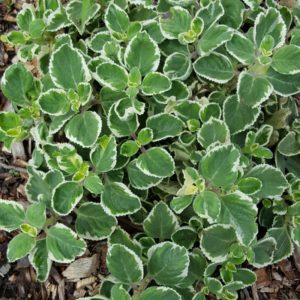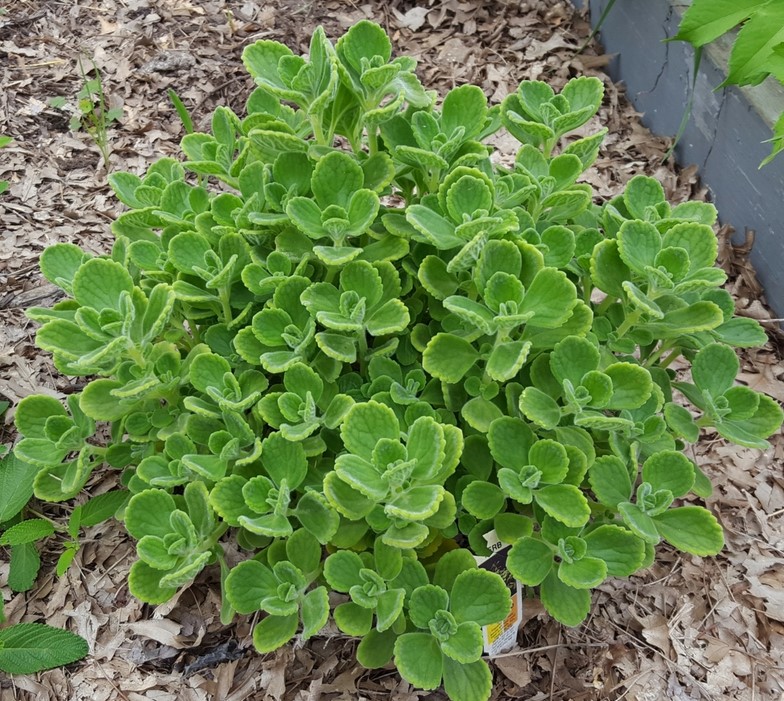
Variegated Cuban Oregano
Cuban oregano (Plectranthus amboinicus) is neither Cuban nor oregano. It is native to southern and eastern Africa. Arab traders brought it to the Middle East, India and Southeast Asia. It was later introduced into Europe. Later still, the Europeans brought it to the Americas during colonization. Curiously, in Cuba, it is known as French oregano. It has naturalized in many tropical areas of the world. The plant has many other nicknames reflecting its widespread use: Indian borage, Spanish thyme, and Mexican mint to name a few.
The foliage smells like a combination of oregano, thyme and turpentine while the flavor of the leaves is a minty oregano. Yet another nickname for it is Vicks Plant. It is most often used to flavor meat and fish dishes. Cuban oregano has many medicinal uses. It is used to treat respiratory issues, malarial fevers, insect bites, allergies, convulsions and epilepsy. In Indonesia, it is given to nursing mothers to improve their milk production.
It is also used as an ornamental plant in both landscapes and containers. The leaves are light green and covered with fine hairs. Some varieties are variegated, green with white edging. The flowers can be white, lavender or blue. Gardeners often rub the leaves on their skin to repel insects while working outdoors.
Like oregano, Cuban oregano is a member of the mint family. It is a semi-succulent plant with fleshy leaves and stems. Grow it in full sun and be careful not to overwater it. It should be allowed to dry out between waterings.
Cuban oregano is a tropical plant, hardy in zones 10 and 11 only. In other growing zones, it needs to be brought indoors during the winter. Full grown plants range in size from 18 inches to 36 inches, depending on the cultivar.
Propagation is usually by cuttings but you can grow it from seed. The seeds should be sown as soon as they are ripe. Older seeds will not germinate. Keep the seeds warm. A heat mat would be useful. Ripe seeds will only germinate in temperatures ranging from 66⁰F to 75⁰F. The seedlings can be transplanted into your garden when the soil has warmed in the spring.
Mature plants can also be divided. Simply lift them from the soil and using a sharp knife, cut the rootball into four pieces. Replant the divisions or share them with friends.

